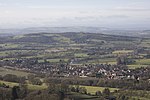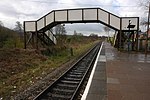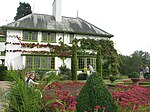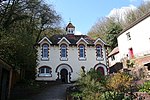The Downs Malvern
The Downs Malvern is a private prep school in the United Kingdom, founded in 1900. It is located on a 55-acre (22 ha) site in Colwall in the County of Herefordshire, on the western slopes of the Malvern Hills. The school takes children aged 2 to 13 and comprises a nursery, kindergarten, pre-prep, and preparatory school; the preparatory school takes both day students and boarders. The Headmaster since 2009 has been Alastair Cook, who is a member of the Boarding Schools Association and the IAPS. Fees are currently up to £21,471 pa for full boarders and up to £16,221 pa for day pupils. Since 2008 the Downs has been the preparatory school for Malvern College. A distinctive feature of the school is its miniature-gauge railway, the Downs Light Railway, which was begun in 1925. Complete with a tunnel and a station, it is the world's oldest private miniature railway.
Excerpt from the Wikipedia article The Downs Malvern (License: CC BY-SA 3.0, Authors).The Downs Malvern
Brockhill Road,
Geographical coordinates (GPS) Address Phone number Website External links Nearby Places Show on map
Geographical coordinates (GPS)
| Latitude | Longitude |
|---|---|
| N 52.0864 ° | E -2.3538 ° |
Address
The Downs, Malvern College Prep School
Brockhill Road
WR13 6EY
England, United Kingdom
Open on Google Maps









